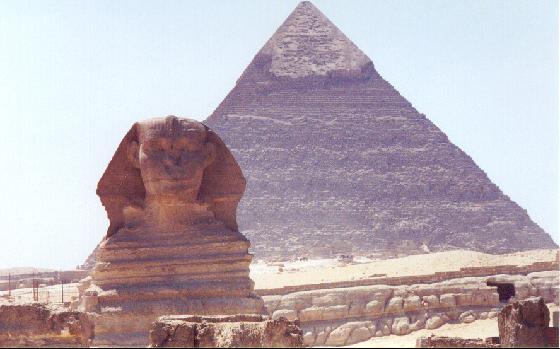
Engineer & Egyptologist Robert Bauval discussed his research into the alignment of the Giza pyramids, and his theories about the Sphinx. Studying aerial photos of the Giza Plateau he saw that the three pyramids were lined up on a diagonal, with the smallest one offset to the left. An Egyptian dynasty text referred to a King that wanted to travel to the star Sirius. Bauval later connected the stars in Orion’s belt (near Sirius) to the positioning of the three pyramids.
His further research showed that shafts inside the Great Pyramid’s chambers were pointed at stars in Orion, coinciding with where they would have been in the sky around 10,500 BC, suggesting the structures at Giza are much older than most Egyptologists believe. Interestingly, 10,500 BC was also the date Edgar Cayce mentioned that a Hall of Records was buried inside the Sphinx. These records may reveal a message or artifact that shows civilization is far older than previously thought, and we are not what we think we are, Bauval suggested.
Most recently, he’s been investigating part of the Sahara that had a large ancient civilization back when the area was fertile. In his visits to the little-known area, he saw “mini-Stonehenges” and huge lost sculptures.
Biography:
Robert Bauval was born in Egypt in 1948. In 1989 he published a study which proposed that the layout of the three Giza Pyramids and their relative position to the Nile was intended to mirror the layout of the three stars in Orion’s belt and their relative position to the Milky Way. This thesis, now known as the ‘Orion Correlation Theory’, became the subject of his first book, The Orion Mystery. Bauval is presently working on a new book, Sirius Rising, which will track the influence of the Egyptian star-goddess Sopdet (Sirius) from prehistoric times to the early Christian era, with special focus on her role in the rebirth cult and temple rituals and alignments.
Originally posted 2016-04-24 04:28:08. Republished by Blog Post Promoter

![Giza-Pyramids-Sphynx-Theories[1]](https://coolinterestingnews.com/wp-content/uploads/2013/02/giza-pyramids-sphynx-theories1.jpg)










